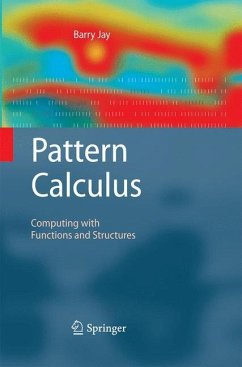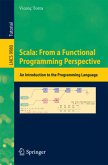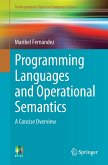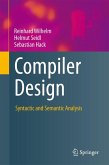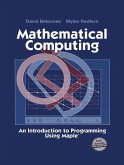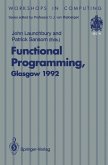Over time, basic research tends to lead to specialization - increasingly narrow t- ics are addressed by increasingly focussed communities, publishing in increasingly con ned workshops and conferences, discussing increasingly incremental contri- tions. Already the community of programming languages is split into various s- communities addressing different aspects and paradigms (functional, imperative, relational, and object-oriented). Only a few people manage to maintain a broader view, and even fewer step back in order to gain an understanding about the basic principles, their interrelation, and their impact in a larger context. The pattern calculus is the result of a profound re-examination of a 50-year - velopment. It attempts to provide a unifying approach, bridging the gaps between different programming styles and paradigms according to a new slogan - compu- tion is pattern matching. It is the contribution of this book to systematically and elegantly present and evaluate the power of pattern matching as the guiding paradigm of programming. Patterns are dynamically generated, discovered, passed, applied, and automatically adapted, based on pattern matching and rewriting technology, which allows one to elegantly relate things as disparate as functions and data structures. Of course, pattern matching is not new. It underlies term rewriting - it is, for example, inc- porated in, typically functional, programming languages, like Standard ML - but it has never been pursued as the basis of a unifying framework for programming.
From the reviews:
"In this book the author will make you have second thoughts about the possibility and desirability of compiling away pattern matching ... It is amazing that the dynamic pattern calculus is syntactically almost as simple as the pure lambda-calculus, yet it is much more expressive." (Eugenio Moggi, University of Genoa)
"More than anyone else, he has systematically explored both the theory and practice of pattern matching. More importantly, the knowledge thus gained has been largely transcribed into this book. Carefully written, it concisely explains the concepts surrounding the integration of pattern matching into both the operational semantics and the type system of two programming paradigms--functional and object-oriented. ... The audience for this book is researchers in programming language design; for them, I highly recommend this book." (Jacques Carette, ACM Computing Reviews, January, 2010)
"This work brings a new perspective for a theory that would unify the driving forces behind the main sub-groups of programming languages ... . The book addresses final year undergraduates, graduates from a research-oriented master and a broader range of specialists, experts in fields related to the foundation of computation. ... the perspective exposed here can be of great use for specialists working in the design of programming languages or in the design of tools and Web services ... ." (Mirel Cosulschi, Zentralblatt MATH, Vol. 1215, 2011)
"In this book the author will make you have second thoughts about the possibility and desirability of compiling away pattern matching ... It is amazing that the dynamic pattern calculus is syntactically almost as simple as the pure lambda-calculus, yet it is much more expressive." (Eugenio Moggi, University of Genoa)
"More than anyone else, he has systematically explored both the theory and practice of pattern matching. More importantly, the knowledge thus gained has been largely transcribed into this book. Carefully written, it concisely explains the concepts surrounding the integration of pattern matching into both the operational semantics and the type system of two programming paradigms--functional and object-oriented. ... The audience for this book is researchers in programming language design; for them, I highly recommend this book." (Jacques Carette, ACM Computing Reviews, January, 2010)
"This work brings a new perspective for a theory that would unify the driving forces behind the main sub-groups of programming languages ... . The book addresses final year undergraduates, graduates from a research-oriented master and a broader range of specialists, experts in fields related to the foundation of computation. ... the perspective exposed here can be of great use for specialists working in the design of programming languages or in the design of tools and Web services ... ." (Mirel Cosulschi, Zentralblatt MATH, Vol. 1215, 2011)

